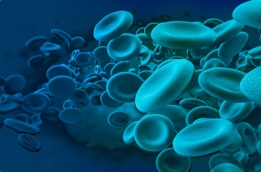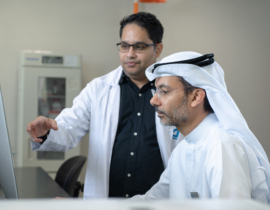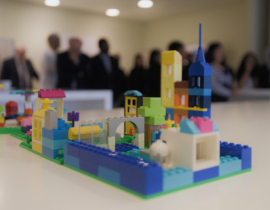MBRU is the 1st Educational Institute to Pioneer Research on Mosquito Biodiversity & Mosquito-borne Viruses in the UAE
Another accolade for Mohammed Bin Rashid University of Medicine and Health Sciences (MBRU), Professor Norbert Nowotny, Professor of Microbiology (Virology), along with Dr. Jeremy Camp, a senior researcher from Vienna, Noushad Karuvantevida, Senior Laboratory Technologist at MBRU, and two Year-3 students from the College of Medicine, Ebtesam Safi and Houda Chouhna, pioneered a research paper on mosquito biodiversity and mosquito-borne viruses in the UAE.
The research was conducted at MBRU’s research labs, it examined three locations across the country: the Ras Al Khor Wild Life Sanctuary in Dubai, the Al Ain Zoo, and Wadi Wurayah in Fujairah.
Professor Nowotny said, “I have been teaching and researching all aspects of viral infectious diseases for decades now, and I’m very proud of this particular research paper because it is the 1st of its kind in the UAE and also it is the 1st research project that has been completed in our MBRU research labs. I enjoyed working with two of our medical students who greatly contributed to the findings.”
The results found ten species of mosquitoes from the UAE, with the highest species diversity in the natural site at Wadi Wurayah. The predominant mosquito was Culex perexiguus, which was associated with peri-urban habitats. The site with lower mosquito species diversity but relatively high species richness was the peri-urban site of Al Ain Zoo, where the research identified Bagaza virus, a virus which infects birds, and the non-pathogenic Barkedji virus.
About the research paper:
In the last 50 years, the UAE has experienced rapid population growth and urbanization. Urbanization is known to influence biodiversity, and there appears to be a link between the emergence of arboviruses (viruses transmitted by arthropods such as mosquitoes and ticks) and urban growth. Very little is known about the UAE mosquito species richness and dominant vectors. We performed a mosquito survey comparing peri-urban sites in Dubai and Al Ain to a protected, natural site in Fujairah. We measured mosquito biodiversity and species composition, and screened mosquito pools for common arboviruses to measure their activity in the region.
Conclusions: Decreased mosquito biodiversity was associated with increased levels of urbanization. Both viruses were found in the same mosquito species, Culex perexiguus.
The full scientific publication can be found here.


